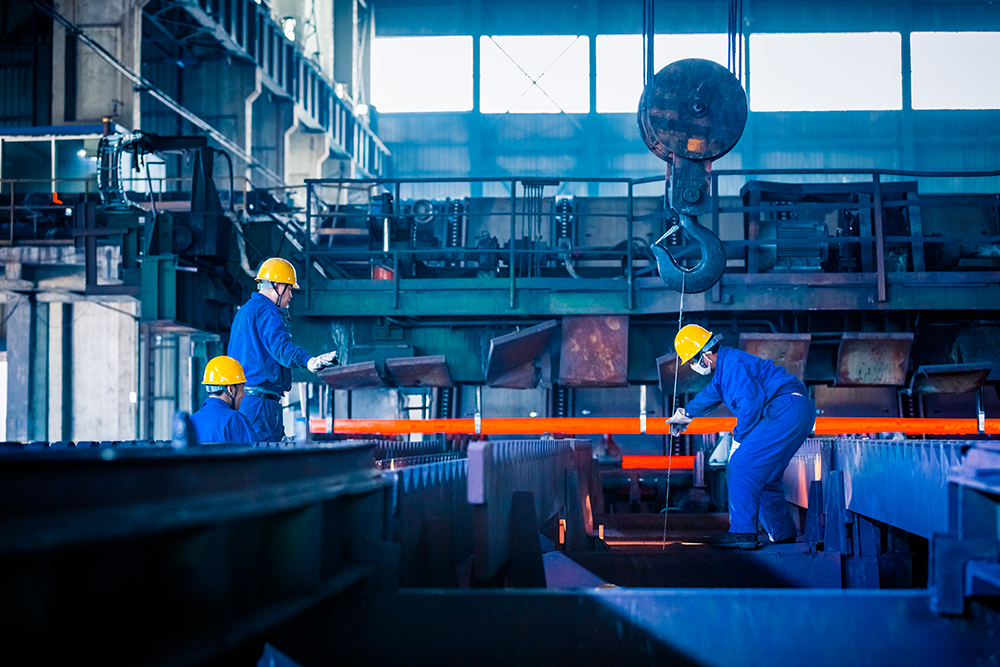
Industries are responsible for transforming raw materials into products intended for use by other industries or even for the consumption of citizens. All of them include high labor, as well as machines to assist in the process.
Its strands can be divided according to the purpose of what it produces or the type of activity or sector in which it fits. These classifications are important insofar as industrial activity can be better analyzed in socioeconomic and spatial aspects. The strategies that are applicable to each one depend on the analysis as to where this industry is in the classification framework of these organizations.
Industry types
This first classification seeks to group manufacturing institutions according to the purposes for which they operate. It is one of the most common ways of classifying industries as they assist in local economic and social analysis.
1. Production goods industry
Industrial entities of production goods are those organizations that are dedicated to the production of raw material that will later be used by another industry that will then transform this element into the final product.
This type of industry is dedicated to transforming an element taken from nature into another material that will be used for the production of some final manufacture.
Consider, for example, that aluminum is extracted from bauxite, which is found in nature. This withdrawal procedure, then, is the activity of the production goods industry. Afterwards, this aluminum will be used by another industry to build a final good.
2. Capital goods industry
The capital goods industry is in some ways responsible for creating materials that help other industries fulfill their roles. This is due, therefore, to the fact that it is responsible for the production of machinery and other equipment that will be applied by factories.
Here are included the industries that produce agricultural machinery, such as mats, planters, harvesters and others, as well as those that produce industrial tools. Ex: metallurgical, steel, petrochemical, naval, etc.
3. Consumer goods industry
The third and last of the types of industries according to this classification is that of consumer goods. In this case, they transform the raw material into a final product that is offered in different markets.
This industrial type is known as the Light Industry, since it does not produce such complex and specific machinery and goods.
This includes both durable products, such as electronics and household appliances, as well as non-durable products, such as medicines, food and beverages.
They are classified in three ways:
Durable goods industry
They include non-perishable products such as household appliances, electronics, furniture, vehicles, among others. It receives this name since the products generated have a long durability.
Semi-durable goods industry
It is an intermediary between the two other types of consumer goods industry. That is, the products generated have a median useful life, for example, phones, clothes, shoes, etc.
Non-durable goods industry
They involve perishable products considered to be of primary need, for example, food, beverages, medicines, cosmetics, etc.
Activity types
Another relevant classification uses the type of activity to carry out the division between industries. In this case, they can be considered extractive or transformation. These two types correspond to the less specific ones, since within each of the modalities different types of industries are covered.
1. Extractive industry
This industry is dedicated to the extraction of natural resources. They are generally non-renewable, such as oil and other minerals, as well as vegetables and rubber from the rubber tree.
This type of operation is aimed at capturing raw materials that will be transformed and manufactured in the future.
2. Manufacturing industry
This other modality includes those industries that already have the raw material in their hands and acts in order to transform it into a product. In this case, all other industry activities are included, such as those related to food, textile production and several others.

Types of industries based on the sector in which they operate
The third type of division applied to industries refers to the analysis of the sector in which they operate, so that there is greater specificity
This classification, then, is the one that allows better approximation of industries with the same characteristics, allowing better comparison and use of data.
1. Energetics
The first type refers to the industries that are dedicated to the production of energy or fuels. Here are the oil companies, hydroelectric plants and companies that develop other types of alternative and sustainable energy.
2. Food
Here are included all the industries that produce food and beverages and promote the your billing. This sector corresponds to one of the largest in the field of industrialization and covers less food as well as more processed foods.
3. Civil Construction
It corresponds to the survey of houses, buildings and other constructions, as well as restorations operated on other buildings.
4. War
The fourth of the types of industries according to the production activity is the war industry. It includes all the production of armaments and vehicles for military use, as well as other tools that can be established as weapons.
Cutting-edge industries
High-end industries are those that focus on high technology. Unlike many of them, these involve qualified labor, that is, workers with a high educational level.
Here, we can mention companies related to communication, computers, telephones, aviation, navigation, among others.
Why is it important to know the types of industry?
Knowing how to classify a type of manufacturing organization in different ways, based on what it produces and who the final recipient is, helps when developing activities in favor of a company.
When a company is hired by another company to provide services, it must know in which environment it is entering and how its services can be useful there. Knowing the production processes, their flaws and their advantages is a great starting point.
An employee hired to provide services in an industry draws on knowledge as to the type of industry and the sector in which it operates. This is important even when the operator is going to provide activities exclusively in the business administrative part.
Various solutions are aimed at companies according to the type of activities they carry out and to whom their products are intended.
Journey control is one of them. In times of pandemic, for example, it is important to know how to deal with the situation within a company and which are compatible with the home office, for example. The best type of journey record is another factor that refers to point control and can vary based on the activities that are provided by the industry.
Another point that stands out is that the technological solutions and the type of service that is provided to these companies, more or less complex, depend on the understanding of where it fits in the general scenario of industries and to whom it is intended.
Consider, for example, a company that promotes sales to another organization that produces machinery. For these sales to be effective, one must know what the company's needs are, how to structure the sales funnel and who are the potential customers for these products.
In this case, the final buyer will correspond to an industry and productive organization. Knowing how she can use the products whose sale you or your company is promoting is essential and can be the key to completing a sale.
Industry in Brazil
Industries emerged in the 18th century with the Industrial Revolution that began in England and spread throughout the world.

Brazilian industrialization started late in relation to the rest of the world, as it emerged in the 20th century, more precisely in the 1930s. With the 1929 Crisis, the country lost the coffee market and had to reinvent itself economically. The Brazilian government and the coffee barons began to implement energy, transportation and machinery systems, which contributed to the industrialization process.
The country's first industries were grassroots. Over time, the private sector received strong investments, and the doors of globalization were opened, giving rise to very strong multinationals and national industries.
Sources:
https://mundoeducacao.uol.com.br/geografia/industrias.htm , https://www.oitchau.com.br/blog/voce-sabe-quais-sao-os-tipos-de-industrias/ , https://www.todamateria.com.br/tipos-de-industrias/


